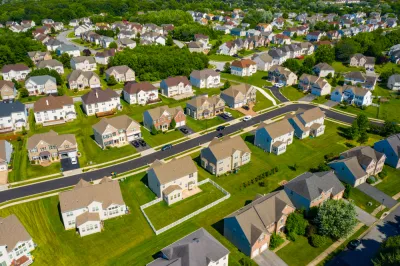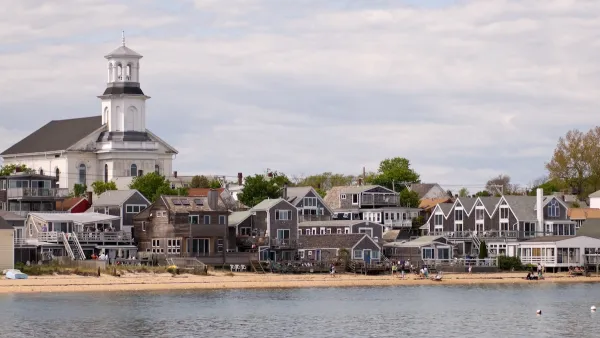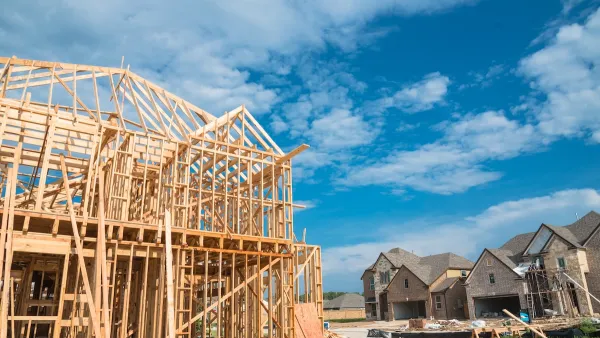A counterintuitive argument contends that from a housing justice perspective, the Biden administration's attack on exclusionary zoning is imprudent.

Joe Biden is now the 46th president of the United States. I join many, likely most, of those in the community of scholars and reflective practitioners concerned with the sorry state of American housing policy in saying “good riddance” to our former president. And breathing an enormous sigh of relief.
YIMBYs, as well as many advocates for housing justice, have cheered a key provision in Biden’s housing plan that targets “exclusionary zoning” (EZ) for elimination. EZ, according to his plan, must go because it “perpetuate[s] discrimination” that “for decades [was used] strategically … to keep people of color and low-income families out of certain communities.”
In a recent article in Urban Affairs Review (UAR)—under the Strangelovian title “Rethinking Exclusionary Zoning or: How I Stopped Worrying and Learned to Love It”—I counterintuitively contended that, from a housing justice perspective, the attack on EZ is imprudent. In my choice of title I was, as I said at the outset of the article, of course being “deliberately provocative and more than a bit facetious.” Overly restrictive zoning can certainly be a source of harms. Rather than “love” EZ, my central claim was that we should simply come to accept it—and thus stop worrying about it so much compared to other much more virulent and insidious forces that militate against housing justice in drastically more significant ways.
UAR editor Jered Carr solicited responses from three smart housing experts with contrasting viewpoints—Katherine Levine Einstein, Edward Goetz, and Rolf Pendall. These, along with a reply from me, will appear in print just as the new Biden administration, with its plan to eliminate EZ in hand, assumes office. To mark the occasion, Shelterforce invited me to revisit my argument here.
I contend that the effort to eliminate EZ—what I dub the Anti-EZ Project—embraces a worldview whose actualization would be far more detrimental to the cause of housing justice (and social justice more broadly) than the actual impacts of EZ. While it is clear that EZ measures often (though not always) both reflect and perpetuate the ubiquitous racism and white supremacy that profoundly corrupt the promise of America, the project to eliminate them inflicts a greater degree of racialized suffering upon those disadvantaged by both class standing and skin color. In short, the Anti-EZ cure is worse—much worse, in fact—than the EZ disease.
Why? My argument boils down to this:
....
FULL STORY: Say It Ain’t So, Joe: Biden’s Ill-Advised Plan to Eliminate Exclusionary Zoning

Analysis: Cybertruck Fatality Rate Far Exceeds That of Ford Pinto
The Tesla Cybertruck was recalled seven times last year.

National Parks Layoffs Will Cause Communities to Lose Billions
Thousands of essential park workers were laid off this week, just before the busy spring break season.

Retro-silient?: America’s First “Eco-burb,” The Woodlands Turns 50
A master-planned community north of Houston offers lessons on green infrastructure and resilient design, but falls short of its founder’s lofty affordability and walkability goals.

Test News Post 1
This is a summary

Analysis: Cybertruck Fatality Rate Far Exceeds That of Ford Pinto
The Tesla Cybertruck was recalled seven times last year.

Test News Headline 46
Test for the image on the front page.
Urban Design for Planners 1: Software Tools
This six-course series explores essential urban design concepts using open source software and equips planners with the tools they need to participate fully in the urban design process.
Planning for Universal Design
Learn the tools for implementing Universal Design in planning regulations.
EMC Planning Group, Inc.
Planetizen
Planetizen
Mpact (formerly Rail~Volution)
Great Falls Development Authority, Inc.
HUDs Office of Policy Development and Research
NYU Wagner Graduate School of Public Service




























